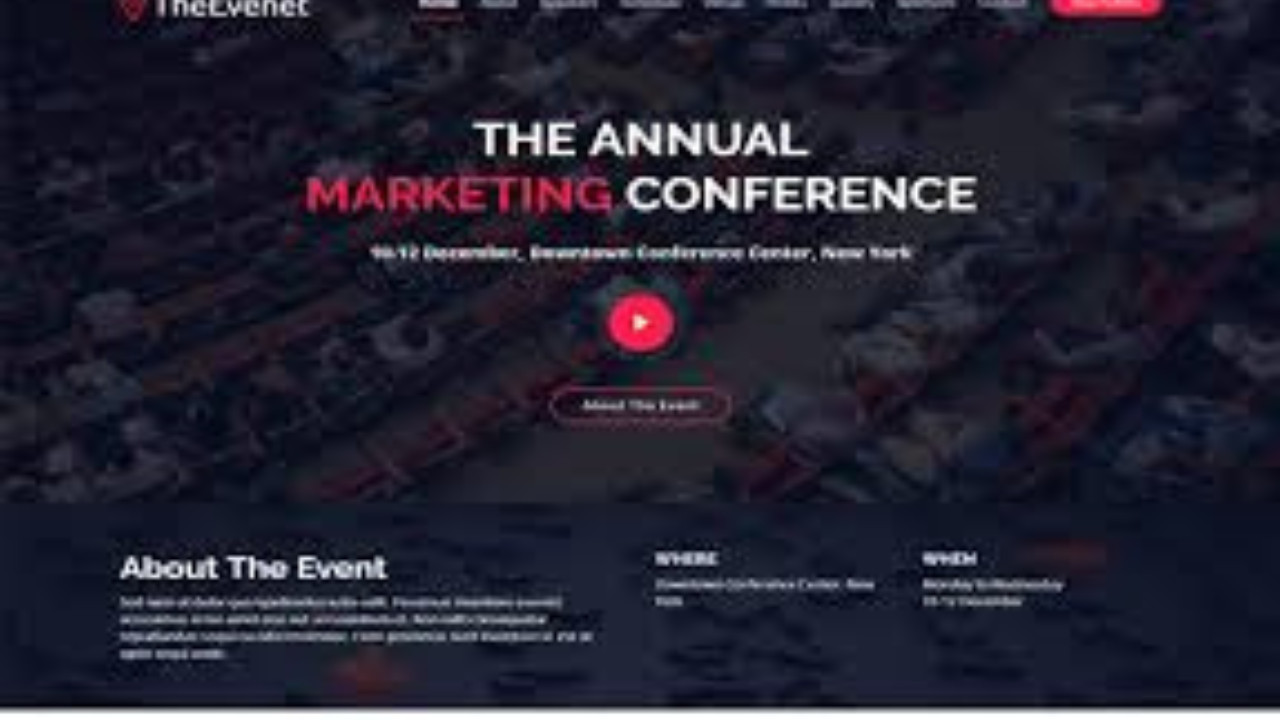Free Download TheEvent Bootstrap Template

The TheEvent Bootstrap Template is a modern and fully responsive website template designed specifically for events, conferences, seminars, and other gatherings. With its clean design and easy-to-use layout, it provides a professional look that will make your event stand out and provide attendees with all the necessary information in a user-friendly manner.
Introduction to TheEvent Bootstrap Template
The TheEvent Bootstrap Template is a modern and fully responsive website template designed specifically for events, conferences, seminars, and other gatherings. With its clean design and easy-to-use layout, it provides a professional look that will make your event stand out and provide attendees with all the necessary information in a user-friendly manner.
Step-by-Step Guide to Customizing TheEvent Bootstrap Template
The TheEvent Bootstrap Template offers a great starting point for creating event-specific websites with sections for event schedules, speakers, registrations, and more. Below, we will guide you through customizing the TheEvent Bootstrap Template to create a stunning website for your event.
Step 1: Download and Set Up the Template
1. Download the Template
You can find the TheEvent Bootstrap Template on various free and premium template platforms like BootstrapMade or Start Bootstrap. After downloading the template, you’ll receive a .zip file with HTML, CSS, and JavaScript files.
2. Extract the Files
Once downloaded, unzip the template files. Open the project folder, and you will find several subdirectories like assets (for images, CSS, and JS files) and index.html (the main HTML page for the website).
3. Open in Browser
To view the template in action, simply open the index.html file in your web browser. This will load the template layout for you to see how it looks and functions.
Step 2: Customizing the Navigation Bar
The TheEvent Template has a sleek, fixed navigation bar that can be customized to provide easy access to different sections of your event website, like the schedule, speakers, or contact information. Here’s an example of how to set up the navigation bar:
This navigation bar includes links to key sections of your event page, including Home, About, Schedule, Speakers, and Register. You can add more links if necessary, depending on your event's needs.
Step 3: Hero Section and Event Introduction
The Hero Section introduces the event to your visitors with a prominent title, description, and a call-to-action button. Here’s an example of the Hero Section:
This section highlights the event name and date while encouraging visitors to register. It includes a prominent button linked to the registration section.
Step 4: Event Schedule Section
The Schedule Section provides event attendees with detailed information about the event’s itinerary. You can use a grid or list format to display the schedule:
This section organizes the event into days and lists out the sessions for each day. You can adjust the time slots and descriptions to match your event’s schedule.
Step 5: Meet the Speakers
Introduce your event’s speakers in a separate section to give attendees a preview of who they’ll be hearing from. The Speakers Section can include a photo, name, and a brief description for each speaker.
Each speaker is presented with a circular image, name, and title or description, making it easy for visitors to learn about the experts at your event.
Step 6: Registration Form
A Registration Section is essential for encouraging attendees to sign up for your event. Below is a simple contact form that collects necessary details from your potential attendees:
This form collects basic details like the attendee’s name, email, and phone number. You can modify it to collect additional information if needed.
Step 7: Footer Section
The footer contains essential links like privacy policies, contact information, and social media handles. Here's how to set it up:
This footer includes a copyright notice and basic links to privacy policies and contact pages.
Conclusion
The TheEvent Bootstrap Template is an excellent choice for building an event website, thanks to its responsive design and easy-to-customize features. With sections for schedules, speakers, registration, and more, it allows you to provide all the relevant event information in one user-friendly layout. By following this guide, you can customize the template to suit your specific event and create a professional, engaging website.